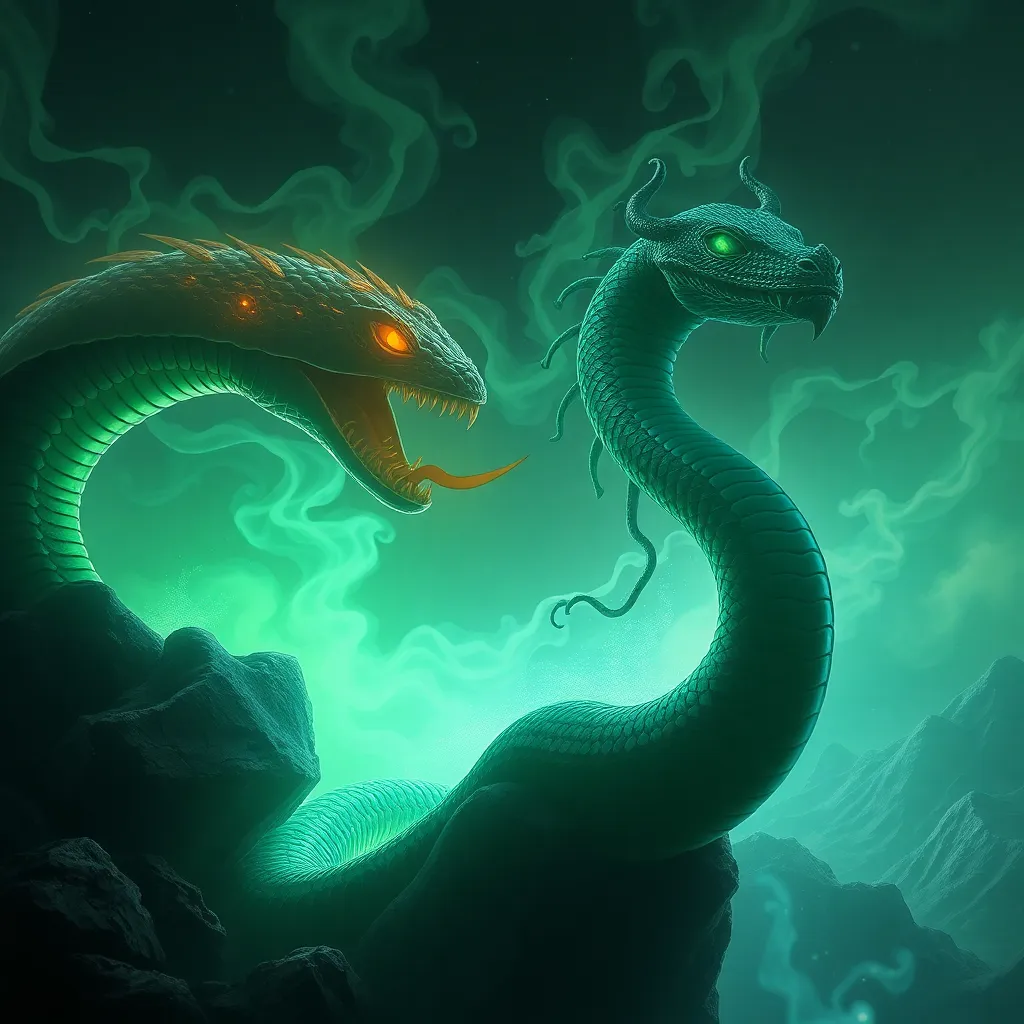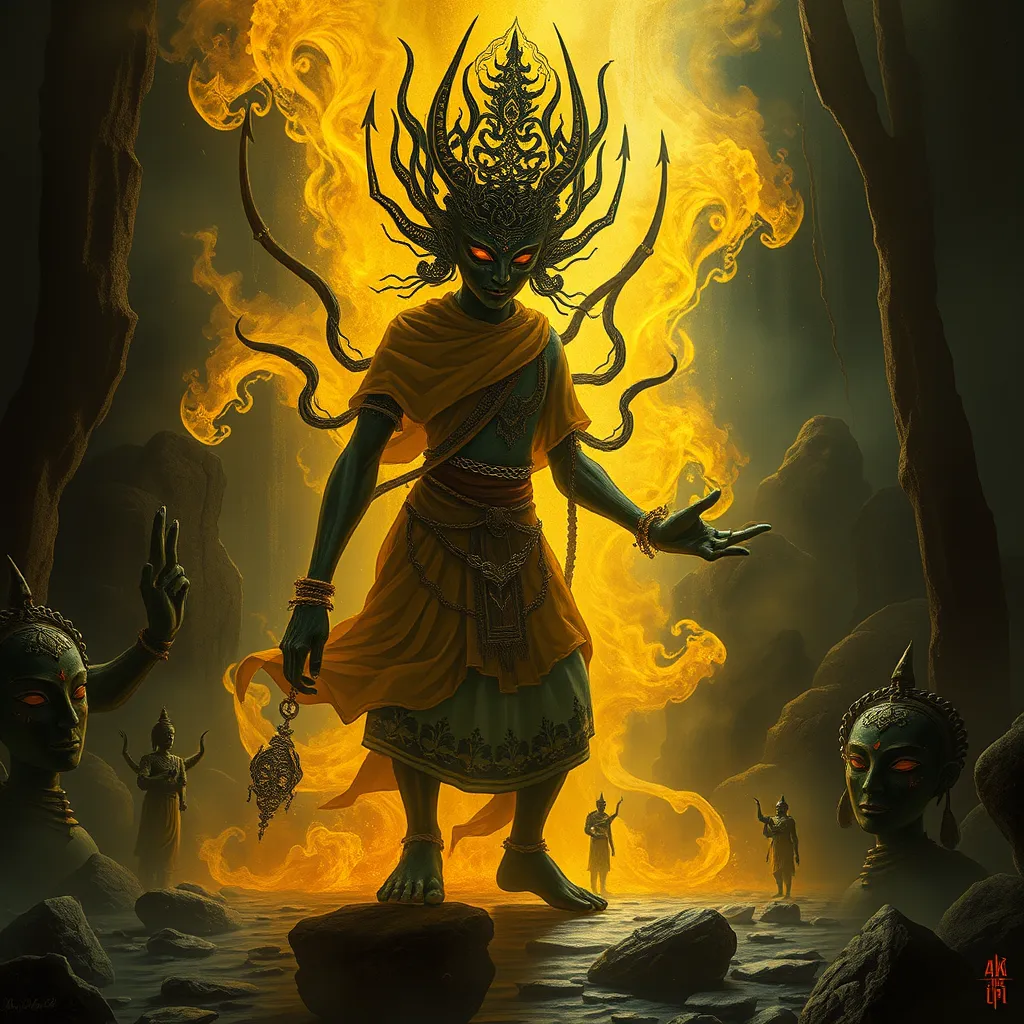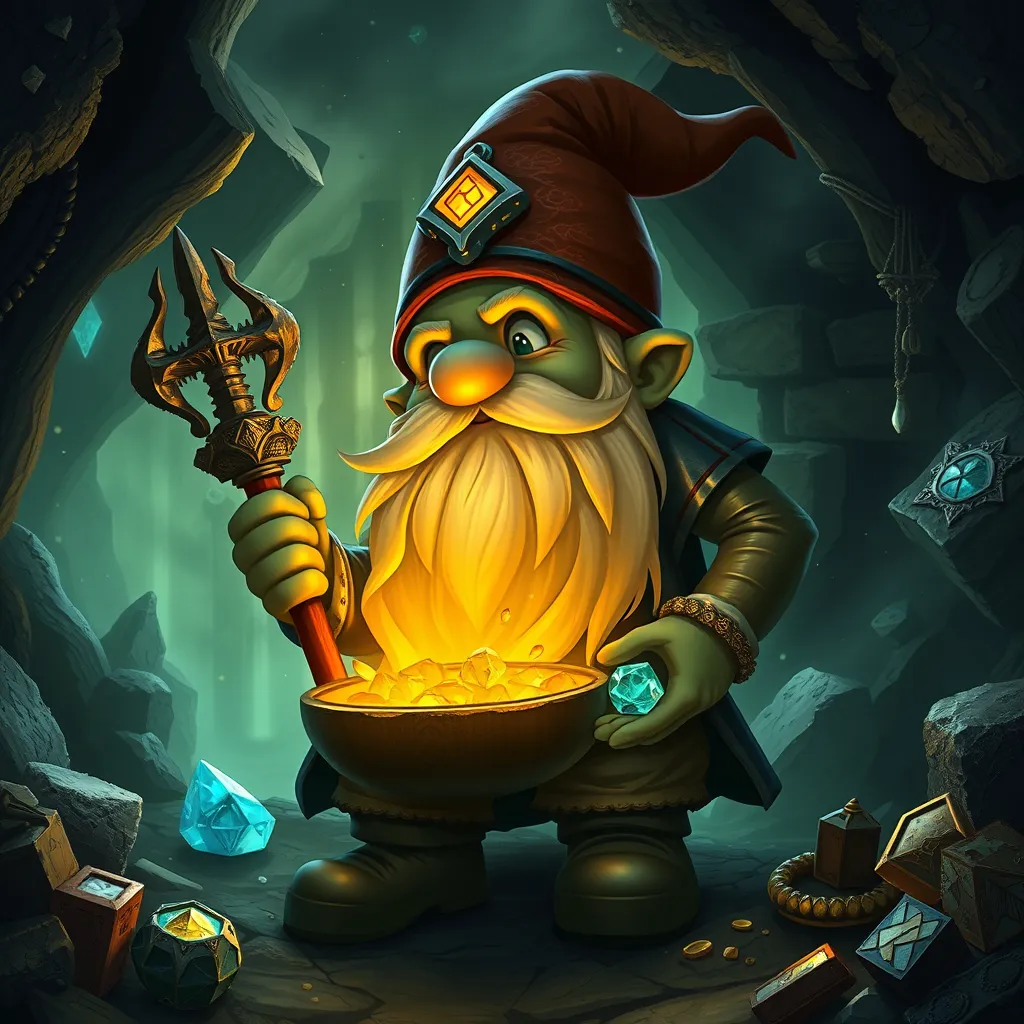The Serpent-Woman and the World Serpent: Comparing and Contrasting Echidna and Jormungandr
I. Introduction
Throughout history, mythological serpents have held significant places in various cultures, symbolizing everything from chaos to wisdom. Two of the most intriguing serpentine figures in mythology are Echidna from Greek mythology and Jormungandr from Norse mythology. This article aims to explore their backgrounds, characteristics, roles, and cultural meanings, ultimately comparing and contrasting these two captivating figures.
II. Background on Echidna
A. Origins and family lineage in Greek mythology
Echidna, often referred to as the “Mother of Monsters,” is a half-woman, half-snake creature from Greek mythology. She is said to be the daughter of the primordial sea deities Phorcys and Ceto, placing her within a lineage of monstrous beings. Her union with Typhon, another fearsome figure, further cements her status as a progenitor of various mythological beasts.
B. Characteristics and symbolism of Echidna
Echidna is typically depicted as a beautiful woman from the waist up, transitioning into a serpent-like lower body. This duality embodies the themes of nature’s beauty and its inherent dangers. She represents chaos, femininity, and the untamed aspects of the natural world, showing how beauty can hide underlying menace.
C. Role in Greek myths and her offspring
Echidna’s offspring include some of the most notorious monsters in Greek mythology, such as:
- The Nemean Lion
- The Chimera
- The Sphinx
- The Hydra
Her role as the mother of these beasts places her at the center of many heroic tales, often putting her children in opposition to heroes like Heracles.
III. Background on Jormungandr
A. Origins and family lineage in Norse mythology
Jormungandr, also known as the Midgard Serpent, is a colossal sea serpent from Norse mythology. He is one of the three children of Loki, the trickster god, and the giantess Angerboda. His siblings include Fenrir, the great wolf, and Hel, the goddess of the underworld. Jormungandr’s origins are steeped in themes of chaos and destruction, much like Echidna’s.
B. Characteristics and symbolism of Jormungandr
Jormungandr is often depicted as a massive serpent that encircles the Earth, biting his own tail. This representation symbolizes the cyclical nature of life and death, as well as the boundaries between the known and the unknown. He embodies the ocean’s vastness, the power of nature, and the inevitability of fate.
C. Role in Norse myths and his relationship with Thor
One of the most famous stories involving Jormungandr is his confrontation with Thor during Ragnarok, the Norse apocalypse. Their battle is prophesied to be cataclysmic, with Thor eventually slaying Jormungandr, but not without succumbing to the serpent’s venom shortly thereafter. This reflects the themes of inevitable conflict and the struggle against fate.
IV. Physical Representations
A. Description of Echidna’s appearance
Echidna is often depicted as a striking figure, combining human beauty with the terrifying aspect of a serpent. Her upper body is that of a woman, often adorned with flowing hair and graceful features, while her lower body resembles that of a snake, coiling and ready to strike.
B. Description of Jormungandr’s appearance
In contrast, Jormungandr is represented as a monstrous, colossal serpent that wraps around the Earth. His scales are often described as dark and shimmering, and his immense size emphasizes his power and the threat he poses to both gods and humans.
C. Symbolic meanings of their forms in their respective cultures
The forms of Echidna and Jormungandr symbolize the duality of nature—Echidna’s beauty and danger reflect femininity’s complex nature, while Jormungandr’s vastness and strength represent nature’s uncontrollable power and the boundaries it establishes.
V. Mythological Roles and Functions
A. Echidna as a mother of monsters and her role in the Greek pantheon
Echidna’s primary role in Greek mythology is that of a progenitor of chaos. Her offspring often serve as antagonists to heroes, embodying the challenges and dangers that must be faced in the pursuit of glory and honor. This positions her as a critical figure in the hero’s journey.
B. Jormungandr as the World Serpent and his role in the Norse apocalypse (Ragnarok)
Jormungandr’s role is pivotal in Norse mythology, particularly during Ragnarok, where his battle with Thor signifies the clash between order and chaos. As the World Serpent, he represents the destructive forces of nature that ultimately lead to the end of the world.
C. Comparison of their impacts on their mythological narratives
Both Echidna and Jormungandr serve as embodiments of chaos in their respective mythologies. While Echidna’s offspring challenge heroes, Jormungandr’s confrontation with Thor represents a cosmic struggle. Their narratives highlight the tension between humanity and the chaotic forces of nature.
VI. Cultural Significance and Symbolism
A. Echidna’s representation of nature, chaos, and femininity
Echidna symbolizes the unpredictable aspects of nature and the inherent chaos within femininity. Her character reflects ancient Greek attitudes towards women, combining reverence for their beauty with fear of their power.
B. Jormungandr’s representation of the ocean, boundaries, and masculinity
Jormungandr represents the ocean’s vastness, acting as a boundary between realms. His association with Loki and masculinity reflects Norse cultural values where strength and chaos are intertwined.
C. How their symbolism reflects the values and beliefs of their cultures
The figures of Echidna and Jormungandr reveal much about their cultures. Greek mythology often emphasizes the hero’s journey against chaos, while Norse mythology highlights the inevitability of fate and the cyclical nature of existence.
VII. Modern Interpretations and Adaptations
A. How Echidna has been portrayed in contemporary media and literature
In modern adaptations, Echidna is often depicted in various forms of media, including literature, video games, and films, where her character is explored in greater depth, sometimes as a tragic figure or an anti-heroine.
B. The representation of Jormungandr in modern pop culture and mythology
Jormungandr has found his way into contemporary pop culture, appearing in comic books, movies, and video games, often portrayed as a formidable force representing chaos and destruction.
C. The evolving understanding of these figures in modern contexts
Today, both Echidna and Jormungandr are reinterpreted to reflect modern sensibilities, with their stories exploring themes of empowerment, existentialism, and the struggle against one’s destiny.
VIII. Conclusion
In summary, Echidna and Jormungandr serve as profound symbols of chaos, nature, and the complexities of femininity and masculinity in their respective mythologies. While Echidna embodies the dangers of nature through her monstrous offspring, Jormungandr represents the inevitable clash between order and chaos during Ragnarok. Their enduring legacy in modern culture illustrates the timeless relevance of these mythological figures and the significance of comparing mythological serpents across different cultures.



